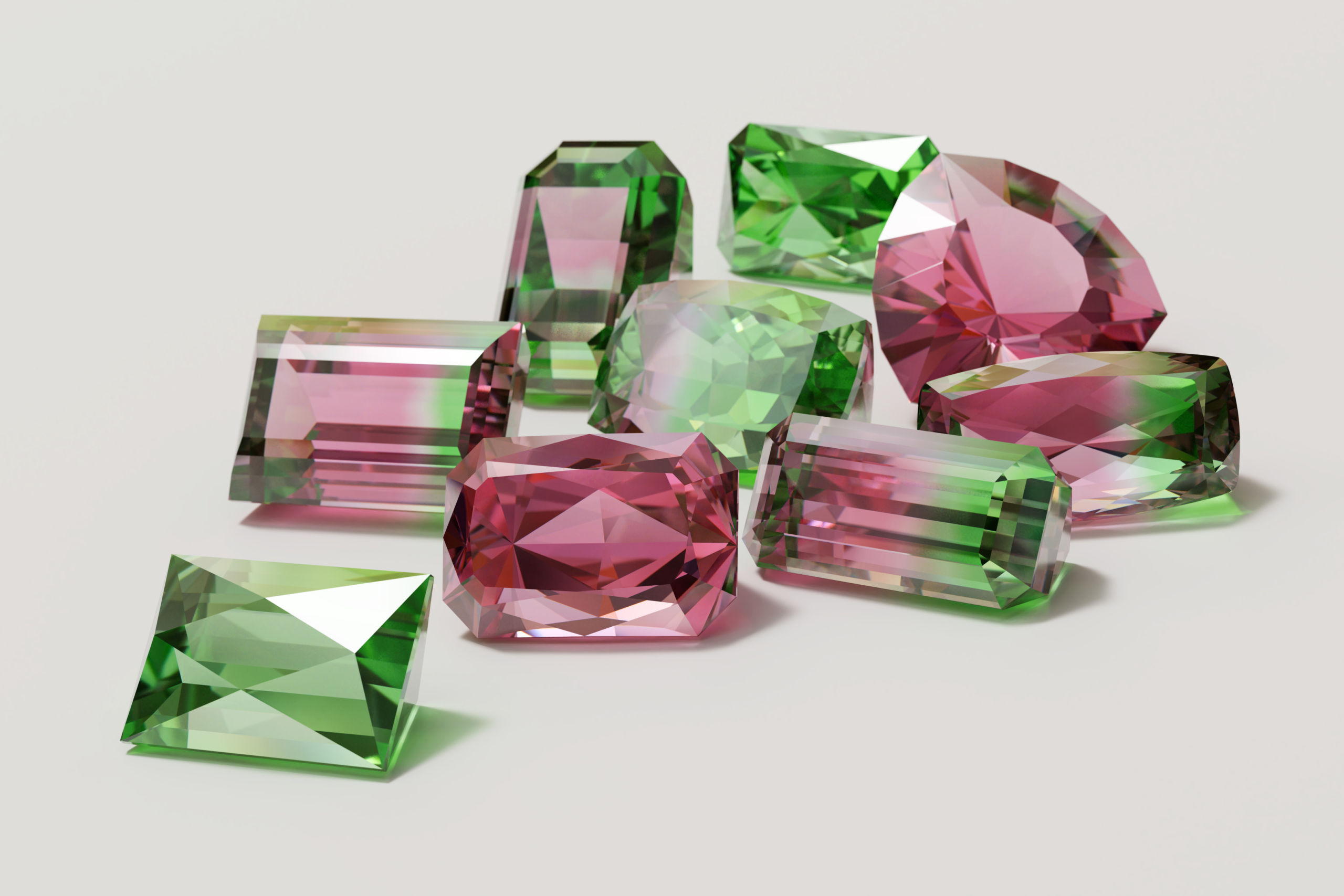
The word “tourmaline” comes from the Sinhala thoramali or thuramali. Sinhala, an Indo-Aryan language, is the official language of Sri Lanka (called Ceylon until 1972) and the exact meaning of these words remains difficult to discern. According to some, they refer to carnelian, “colored stones” or, quite simply, different stones from Sri Lanka.
The naturalist Valmont de Bomart specifies in his Dictionary of Natural History of 1775 that the inhabitants of Ceylon called these tournamal stones. Dutch sailors transmitted this term by bringing tourmalines to Europe around 1700. They themselves call it however aschentrekke (“which attracts ashes”). In France, it is first described under the name of Ceylon magnet before taking the form of tourmaline (which will also give the English word).
It would seem that the term tourmaline became official in 1756. It thus appears in the History of the Berlin Academy of Sciences and later in the Journal de Trévoux, a historical and scientific gazette founded by the Jesuits. At that time, the Germans also referred to it under the name of trip and the French sometimes distorted tourmaline into turpeline.
Tourmalines throughout history
In ancient times
Before its import from Ceylon, tourmaline left little trace in Western civilizations. We think we recognize it in Latin texts from Antiquity, but opinions are divided. Is this the weird lyncurium (supposedly made from lynx urine)? Its description brings it closer to amber. Is it then the “stone of Theamedes” (lapis theamidis) from Ethiopia? Its properties are more reminiscent of magnetite. The third proposition seems the most convincing, it concerns the fiery ionia stone (or Ionian stone): “the color of violet, purple or scarlet which, heated in the sun, attracts straw or sheets of paper. "
We know of a tourmaline intaglio representing Alexander the Great dating from the 3rd or 4th century BC. This stone is therefore known but the signs of its presence remain rare.
It seems much more common in the East where sculptors and engravers make snuffboxes, Buddhas, goddesses and other figurines of it. The Chinese prefer the pink tourmaline called “hong-yug “(pink flower). Beads, hairdressing accessories and various ornaments in tourmaline will have, until the fall of the Middle Empire, the favor of empresses and concubines withdrawn from the inner courtyard of the Forbidden City.
A gold ring set with a pink tourmaline was recently found in the northern regions of Europe. It would date from around the year 1000. Does this stone come from the West? It can be a present or an exchange from the East via the very active amber routes at that time.
In the Middle Ages
In the Middle Ages, we do not find any description of jewelry or mineral precisely corresponding to tourmaline. It perhaps belongs to the category of “strange stones “often cited in inventories of the medieval period.
Black tourmaline was first described in 1524 by a German Lutheran scholar Johannes Mathesius. He uses the term schorl, derived from a Saxon village name or a word meaning "rock" but other similar minerals are referred to as such.
Tourmaline remained discreet until its arrival in Holland at the beginning of the 18th century. The wealthy United Provinces (roughly corresponding to the present-day Netherlands) opened up maritime trade routes and founded the Dutch East India Company, the famous VOC Ceylon was an important step because the Dutch obtained cinnamon there. Tourmalines benefit from the trip and immediately attract attention with their special properties.
In the Modern era
In the Age of Enlightenment, scientific curiosity was tireless. Tourmaline is the subject of abundant studies and experiments in Europe. The French physician and chemist Nicolas Lémery officially presented it to the Royal Academy of Sciences in 1717. In 1757, the German Franz Aepinus was the first to carry out in-depth research on its electrical properties. A passionate Neapolitan, Duke NoyaCarafa, continued the same work and transmitted his conclusions to Buffon. The famous naturalist is responsible for deepening the first observations. He also underlines that " electricity has soothing virtues for nervous irritations and acute pain “.
Later, the mineralogist Romée de l'Isle classified schorl and all other tourmalines in the same species.
In jewelry, tourmalines are considered with less rigor and fanciful names will persist for a long time: “Brazilian sapphire” for blue, “Brazilian or Ceylon emerald” for green, “Brazilian peridot” for yellow. The coveted red tourmaline is called “oriental ruby”, “Siberian ruby”, “Siberian schorl”, or even “apyre” or “crimson” tourmaline.
In recent centuries, black tourmaline, preferably opaque or a beautiful velvet black, was used in the composition of mourning jewelry, such as jet or onyx.
There is a pinkish-orange granite sprayed with black tourmaline, this rarity is only found in a village in English Cornwall called Luxulyan or Luxullian. Luxullianite, a strikingly contrasting ornamental stone, was chosen for the tomb of the Duke of Wellington, visible in St. Paul's Cathedral in London.
Of a completely different kind, Zurich's Grossmünster Cathedral is also home to tourmalines. Since 2009, you can admire the stained-glass windows by artist SigmarPolke. They are all composed of slices of multicolored agates apart from a figurative stained-glass window evoking the "scapegoat". This scene with resplendent colors is made of colored glass inlaid with thin strips of pink and red tourmalines.
